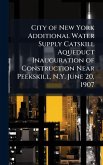Dive into the historical charm of Menands with Henry P. Phelps's meticulously researched account, "Menands: The Garden Suburb of Albany and Troy." Originally published in 1886, this book offers a unique glimpse into the planning and development of Menands, New York, as a pioneering garden suburb. Phelps explores the area's natural beauty, architectural design, and the visionaries who shaped its early development. Discover the origins of this unique community and its significance in the context of late 19th-century urban planning. This volume is a valuable resource for historians, urban planners, and anyone interested in the local history of the Albany and Troy region. Explore the roots of a suburban ideal and its enduring legacy in the landscape of upstate New York. This work has been selected by scholars as being culturally important, and is part of the knowledge base of civilization as we know it. This work was reproduced from the original artifact, and remains as true to the original work as possible. Therefore, you will see the original copyright references, library stamps (as most of these works have been housed in our most important libraries around the world), and other notations in the work. This work is in the public domain in the United States of America, and possibly other nations. Within the United States, you may freely copy and distribute this work, as no entity (individual or corporate) has a copyright on the body of the work. As a reproduction of a historical artifact, this work may contain missing or blurred pages, poor pictures, errant marks, etc. Scholars believe, and we concur, that this work is important enough to be preserved, reproduced, and made generally available to the public. We appreciate your support of the preservation process, and thank you for being an important part of keeping this knowledge alive and relevant.
Bitte wählen Sie Ihr Anliegen aus.
Rechnungen
Retourenschein anfordern
Bestellstatus
Storno








